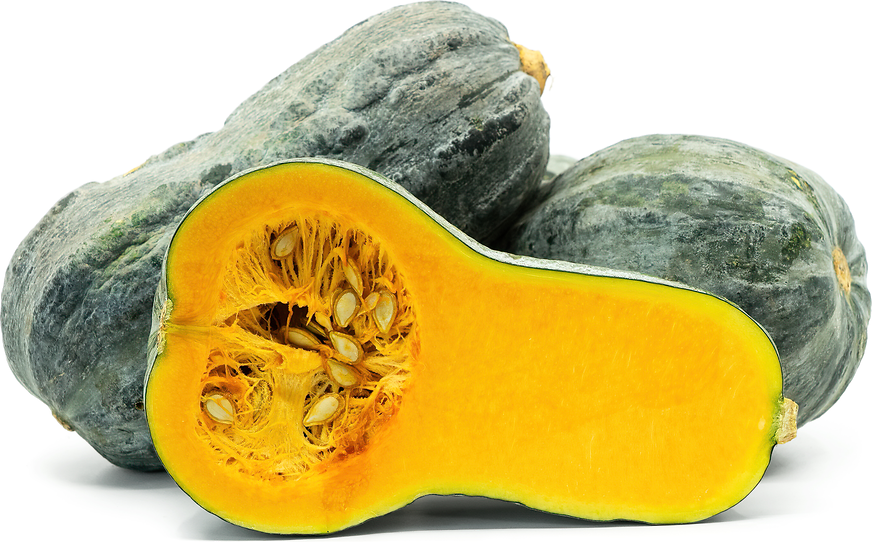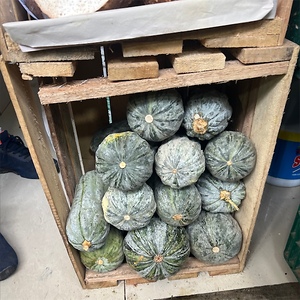


Loche Zapallo Squash
Estimated Inventory, lb : 0
Description/Taste
Zapallo Loche is a medium-sized squash with a dark, bluish green skin with occasional bumps. They vary in shape from butternut squash-like to bottle-shaped or even crookneck, and measure around 30 centimeters long. They are harvested before getting too large and average just over 2 pounds. The firm flesh is an intense golden yellow to orange and free of fibers. It offers a unique flavor, like a richer butternut squash with a hint of spice.
Seasons/Availability
Zapallo Loche squash are available in fall months in Peru.
Current Facts
Zapallo Loche is a Peruvian landrace variety, related to crookneck squash and pumpkin, and botanically classified as Cucurbita moschata. The word “loche” is a word from the ancient Mochica language and means “tears of the moon.” The squash is relatively unknown outside of northern Peru and nearby Ecuador. The bumpy, green squash started gaining popularity in modern Peruvian cuisine in the 1970s. In 2010, the Zapallo Loche received a Denomination of Origin, recognizing its impact on the identity and cuisine of the Lambayeque region in Peru and protecting its status.
Nutritional Value
Zapallo Loche is high in both alpha and beta carotene, and vitamin A. It is a good source of carbohydrates and a source of calcium, iron, phosphorus, riboflavin, and vitamins C and B5.
Applications
Zapallo Loche is a big part of the cuisine in Chiclayo, Peru and is often prepared with the skin on and grated for dishes. They are used in traditional locro, or vegetarian stew, or pureed and mixed with cream for soup. The squash is halved, baked and served as a side dish often accompanied by the local Peruvian libation, chicha de jora. It is also added to traditional dishes in the area like arroz con pollo (chicken and rice) and roasted goat leg. The corn-based beverage is also paired with Zapollo Loche in sudado de pescado, a tomato-based fish broth popular in northern coastal Peru. Store whole, uncut Zapallo Loche at room temperature for up to 2 months. Refrigerate any cut portion.
Ethnic/Cultural Info
Zapallo Loche has been a part of the culture in Peru for thousands of years. It is believed the ancient Andean civilization of Moche, or Mochica, first domesticated the Loche squash around 100 A.C.E. The squash is depicted on pottery, known as huaco, formed into the shape of a Loche and date to the 4th century B.C.E. The Chimú and Lambayeque cultures also used and appreciated the Loche, representing it in their own huacos.
Geography/History
Zapallo Loche is native to the Lambayeque region on the northern coast of Peru. It has been cultivated for at least 2,000 years and is considered a landrace variety, having grown in one particular location for a long period of time. They are propagated through cuttings and the fruits grown from cuttings are said to be more aromatic and flavorful than those propagated through seeds. Zapallo Loche has a look-a-like cousin, zapallo criollo, which has a similar appearance. When Loche is out of season or scarce, some merchants will sell pieces of criollo squash as Loche squash, but the flavor and aroma are not the same. Zapallo Loche may be spotted at local markets and mercados in Peru and possibly neighboring Ecuador.
Recipe Ideas
Recipes that include Loche Zapallo Squash. One
| Cook Eat Live Love |
|
Aguadito De Verduras - Green Vegetable Soup |








